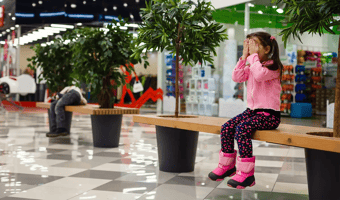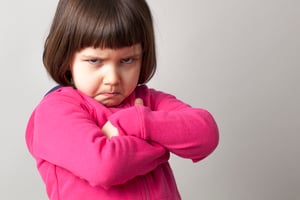Children like to have the same book read, game played, or song sung over and over. They find...
Anxious Children in 2022
A lot of my childhood was spent in a fear state. I continually watched my back for ghosts, the devil and the boogie man. I was told the boogie man was watching to make sure I stayed in bed. My active imagination saw him walking the hall many times. I never did see the devil, but I frequently heard him breathing in my room. His breathing sounds a lot like a radiator, in case you were wondering.
At school I felt anxious about doing things incorrectly. I was in a classroom with too many rules and too many children. One day in first grade while waiting for my turn to read, my curiosity told me to pull a plug out of the wall. My imagination then told me the classroom was getting colder. We could all freeze and it was my fault. I burst into tears. The teacher did not even mention my error, but instead offered me comfort. She then reinserted the plug. No one froze to death this time, in case you were wondering.
Currently, many parents and teachers are reporting that their children are showing anxious behaviors and fears. Children are finding the world unpredictable. Many children are fearful about the future. Feeling safe is extremely important to a child’s healthy development. Keeping our children safe used to mean locking doors, avoiding rabid animals, and making sure children wore a safety belt. The research in neurobiology tells us feeling safe, threatened or in danger is felt in our body and affects our entire being.
Caregivers can increase safe feelings by monitoring their environments. All day long, day in and day out there are broadcasts reporting war, shootings, death and weather-related phenomenon. These heighten a child’s feelings of being unsafe and increase their fear of the future. Stopping news broadcasts and conversations that contain topics that sound hopeless, scary, or depressing can help a child not become overwhelmed. Limiting our own exposure will help us lessen anxious and depressed thoughts and feelings. The troubles in the world can overwhelm our nervous systems as well.
When our children do hear about catastrophes, we can assure them that we will keep them safe. Mr. Rogers told us to look for the helpers whenever catastrophes occur. I never knew to teach my children this, unfortunately. I hope you will. There are many people from first responders to teachers and kind neighbors who will care for us when needed.
Feeling safe at home comes from connection. Caregivers can carve out time to connect with family as well as individually with each child. Affectionate touches, looks and words all help a child feel safe in your love. Tell children about the good things happening locally and in the world, to give them hope. Caregivers can communicate safety by checking-in and really listening to children while validating their feelings. If you feel your child’s life is being impaired significantly and their fear, anxiety or avoidance are persisting, consult your pediatrician or a mental health professional.
Practicing mindfulness each day will help a child feel and then know the sensation of calm which with practice they can call on when needed in an anxious or fearful situation. A family routine of practice will help us all. Deep breathing can be as simple as breathing in slowly and deeply for a count of 4/5 and then either blowing on an imaginary cup of hot cocoa to cool it or blowing out a pretend birthday candle for a count of 6/7. Young children like to lie down with a small stuffed animal on their chest and breathe in and out slowly. Elementary aged children can use videos on-line like this one from Cosmic Kids Activities that focus a child’s senses are mindful, whether it is thoughtfully exploring and eating an orange slice or sitting calmly and noticing the sensations from your feet touching the floor. This meditation by Beth Kurland is for 5 years and up Being in nature is calming for our nervous systems. Mindfully watch the clouds drift by or the wind dance with the leaves.
Keep strong, Caregivers. We can do this. The research on mindfulness continues to show positive results. Some links are below, in case you were wondering
Crescentini, C., Capurso, V., Furlan, S., & Fabbro, F. (2016). Mindfulness-Oriented Meditation for Primary School Children: Effects on Attention and Psychological Well-Being. Frontiers in psychology, 7, 805. https://doi.org/10.3389/fpsyg.2016.00805
Perry-Parrish, C., Copeland-Linder, N., Webb, L., & Sibinga, E. M. (2016). Mindfulness-Based Approaches for Children and Youth. Current problems in pediatric and adolescent health care, 46(6), 172–178. https://doi.org/10.1016/j.cppeds.2015.12.006
Zhang, Y., Chen, S., Wu, H. et al. Effect of Mindfulness on Psychological Distress and Well-being of Children and Adolescents: a Meta-analysis. Mindfulness 13, 285–300 (2022). https://doi.org/10.1007/s12671-021-01775-6




